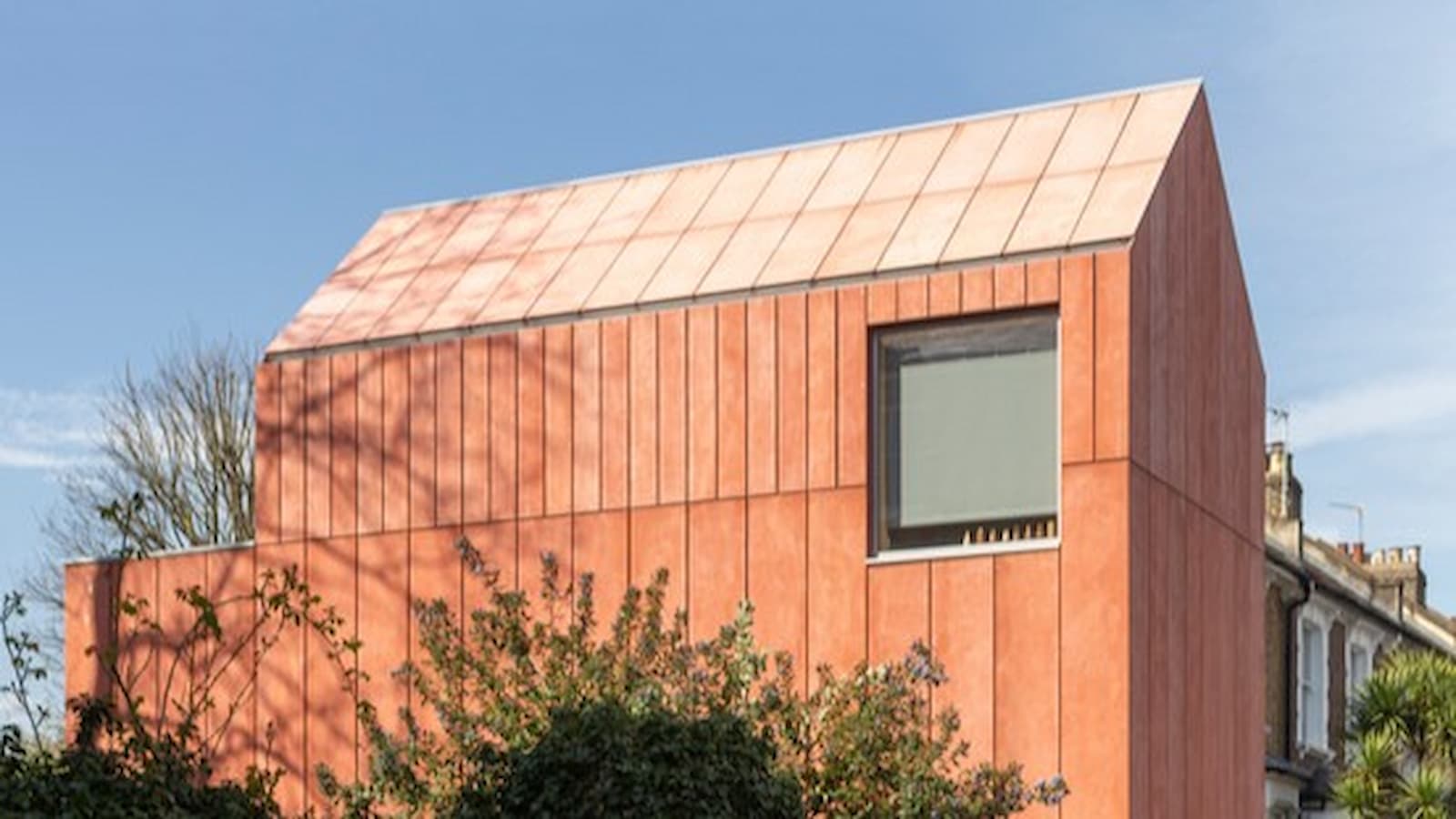The secret to keeping a conservatory cool — 7 simple fixes most people overlook
Keeping a conservatory cool in summer doesn’t have to be a challenge. These simple tricks will help you beat the heat and reclaim your space
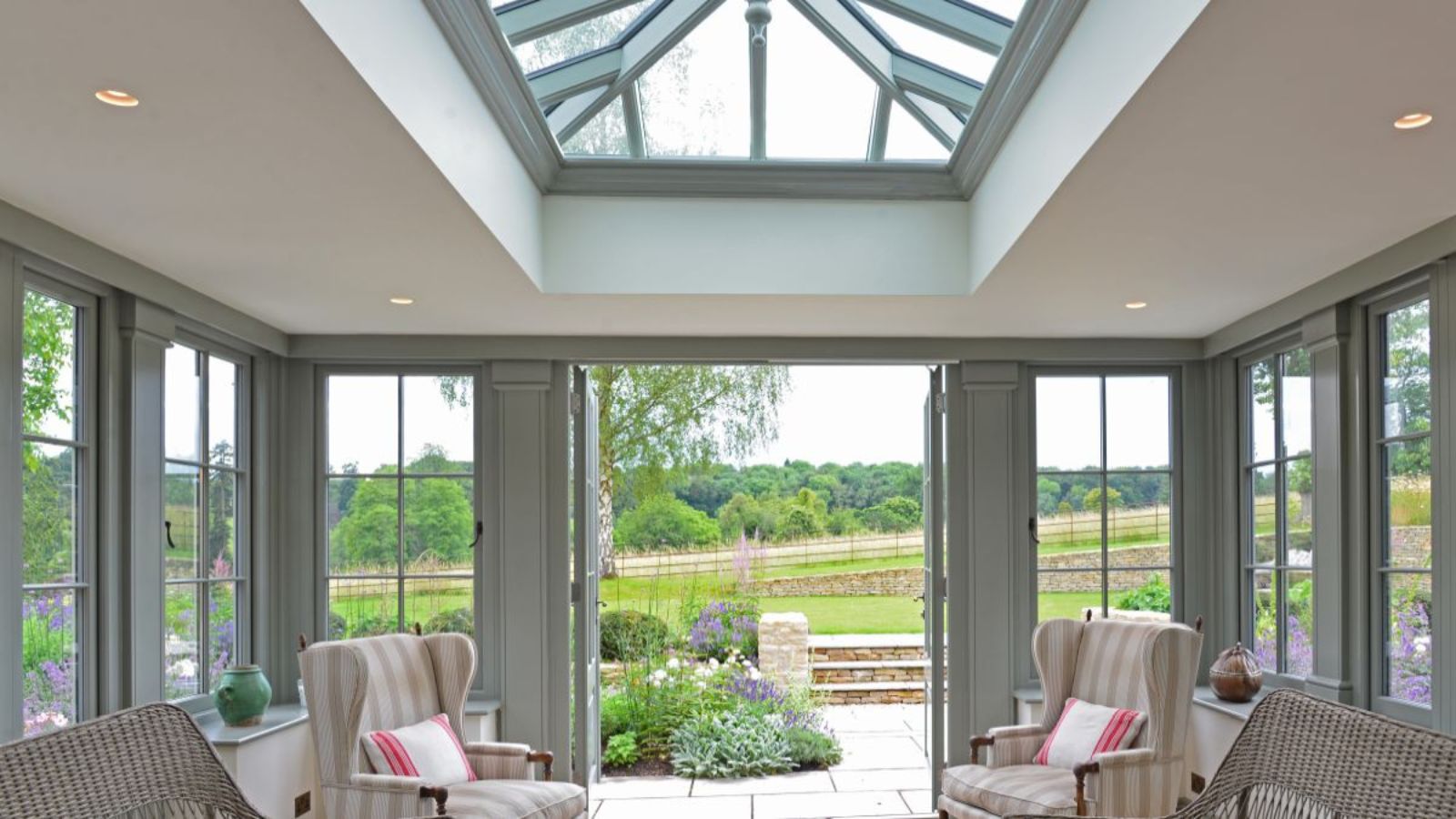
A conservatory is the perfect place to relax and take in garden views, but when summer rolls around, these spaces can quickly feel more like a sweltering greenhouse than a tranquil retreat. All that beautiful glazing might flood the space with natural light, but it also traps heat, making it tricky to keep temperatures comfortable when the mercury rises.
Thankfully, you don’t have to abandon these rooms entirely when the sun’s out. Whether you have a traditional or modern conservatory design, there are plenty of ways to keep a conservatory cool without sacrificing that bright, airy feel. From ventilation tricks that maximise airflow to smart blinds and cooling floors, a few clever updates can make all the difference.
How to keep a conservatory cool in warm weather
Without the right cooling measures in place, your conservatory can quickly become uncomfortable during the warmer months. Below, we’ve rounded up expert-backed ways to stop your conservatory from overheating, so you can enjoy it all summer long.
1. Improve ventilation
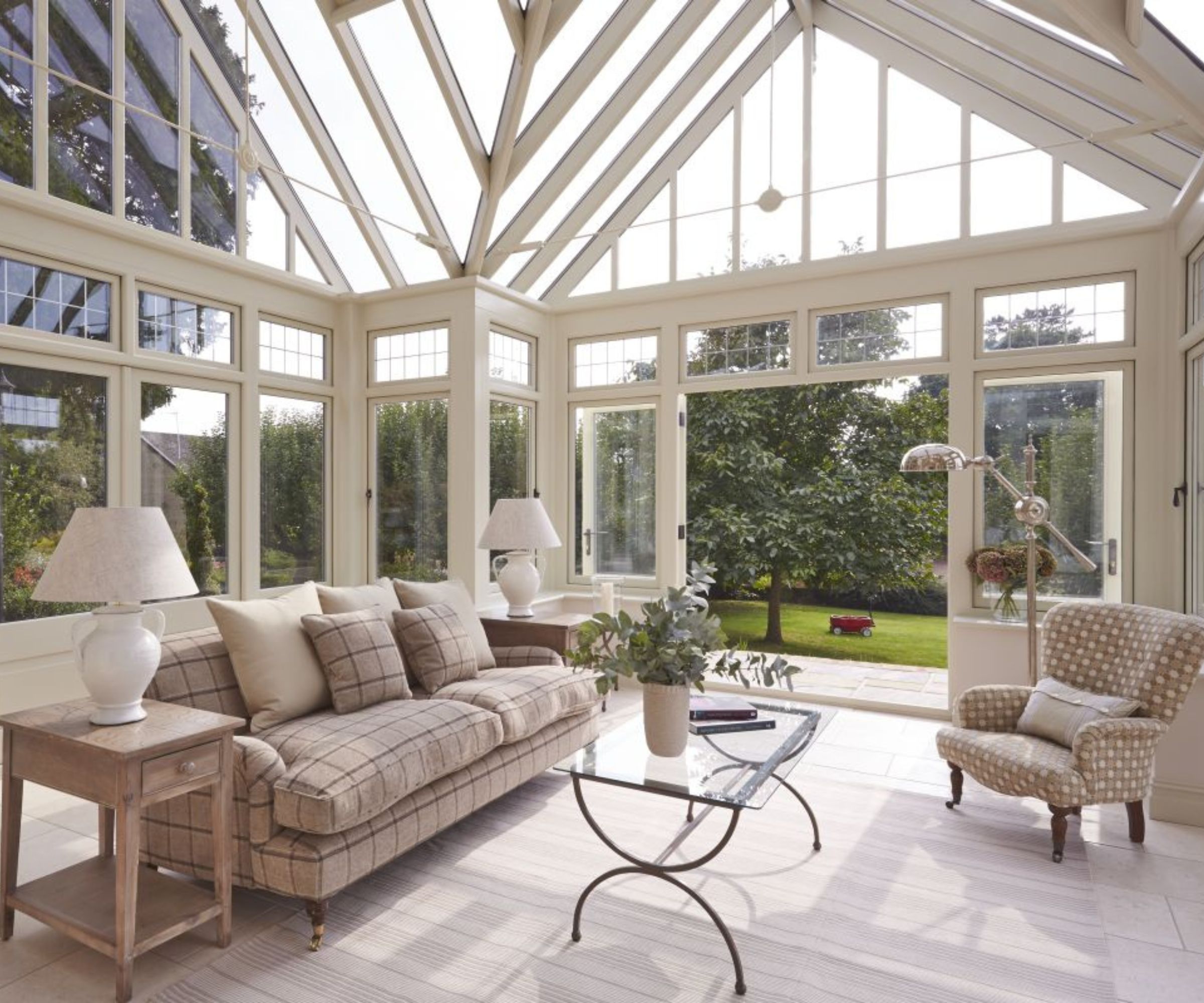
One of the simplest and most effective ways to keep a conservatory cool is with natural ventilation. Instead of relying on mechanical cooling, maximising the room's airflow helps fresh air circulate while pushing out excess heat.
"To ensure a comfortable conservatory year-round, it’s essential to incorporate sufficient ventilation to account for the warmer summer months," explains Lisa Morton, director of Vale Garden Houses. "We advise clients to integrate ventilation in two key areas: the side frames and roof space. This helps to create a natural circulation of fresh air, drawing in cooler air at a lower level and allowing warmer air to escape from above, which will prove invaluable throughout the hot summer months."
Allowing cooler air to enter at a lower level while warm air escapes through roof vents, helps you to maintain a much fresher conservatory without the need for costly cooling systems.

Lisa is the Director of Vale Garden Houses, a family-run business with over 40 years of expertise. Renowned for its craftsmanship, Vale is one of the most respected and well-established names in the design and construction of glazed structures.
2. Install thermal blinds for shade
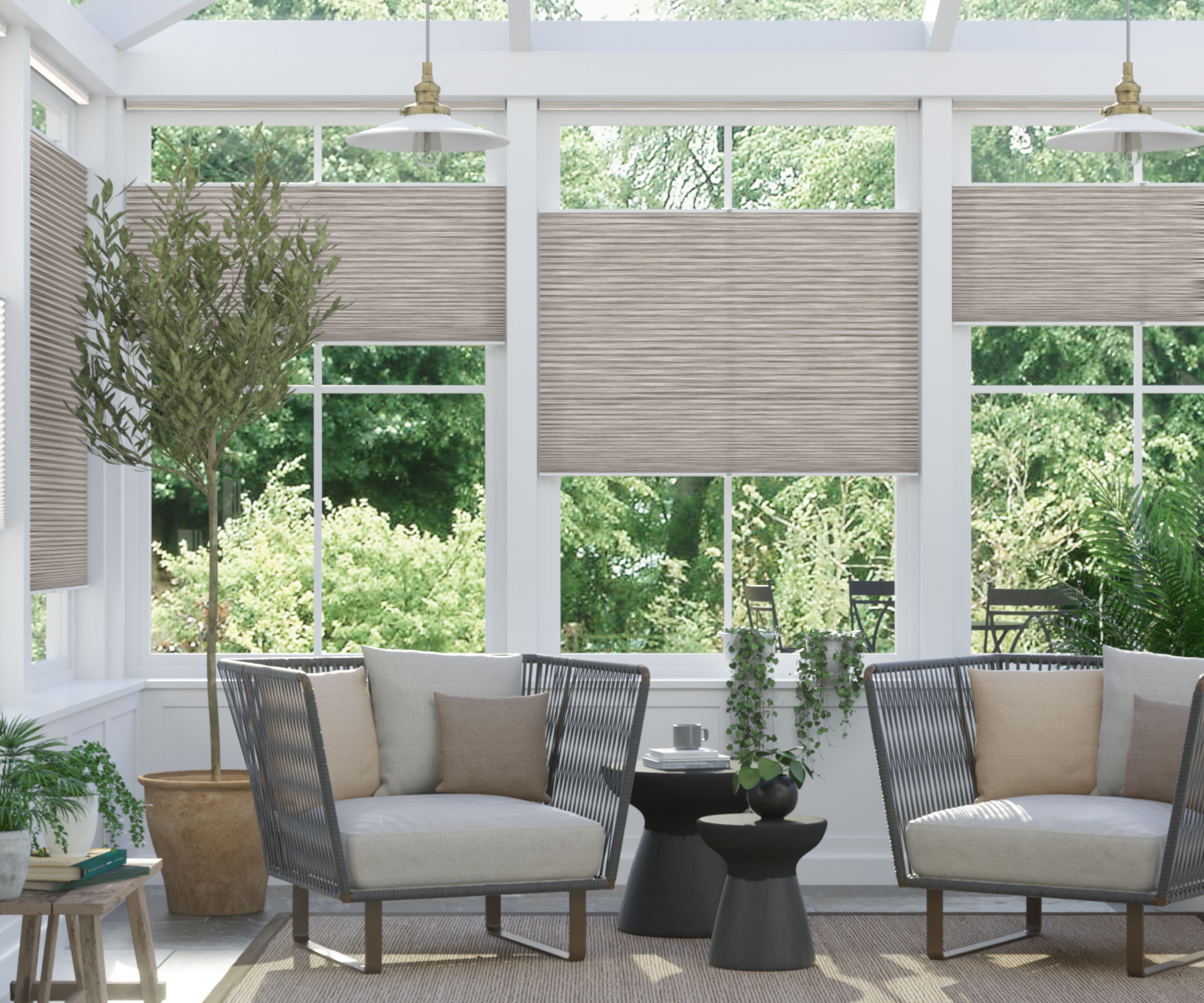
Once heat gets trapped inside a conservatory, it can be tough to shift, so the best approach is to stop it from building up in the first place. The right window treatments make all the difference, keeping harsh sunlight out while still allowing soft, natural light to filter through.
"Good quality window treatments such as lined curtains and blinds are worth the investment," explains Debbie Leigh, design manager at ILIV. "They offer temperature control and privacy year-round. Blackout and thermal linings also help to keep a conservatory cool in summer by blocking out unwanted light."
For a flexible option, thermal-lined roller blinds reflect heat away while letting you adjust the light levels throughout the day. Pleated blinds, with their specialist reflective fabric, are another great pick, bouncing the sun’s rays straight back out. If you prefer an unobstructed view, solar-control window film – such as this heat reflective window film from Amazon – can help reduce heat and glare without covering up the glass.
Top Tip: To get the most out of your conservatory blinds, close them before the midday sun hits. Letting the sun stream in early might seem appealing, but once the heat builds up, it’s much harder to cool the space down. Keeping the blinds drawn during the hottest hours of the day will help keep your conservatory feeling fresh and cool.

With more than 30 years of experience designing luxury window treatments for conservatories and home interiors, Debbie takes every design from conception right through to the finished textile - inspired by the latest trends and techniques from every continent.
Shop conservatory blinds
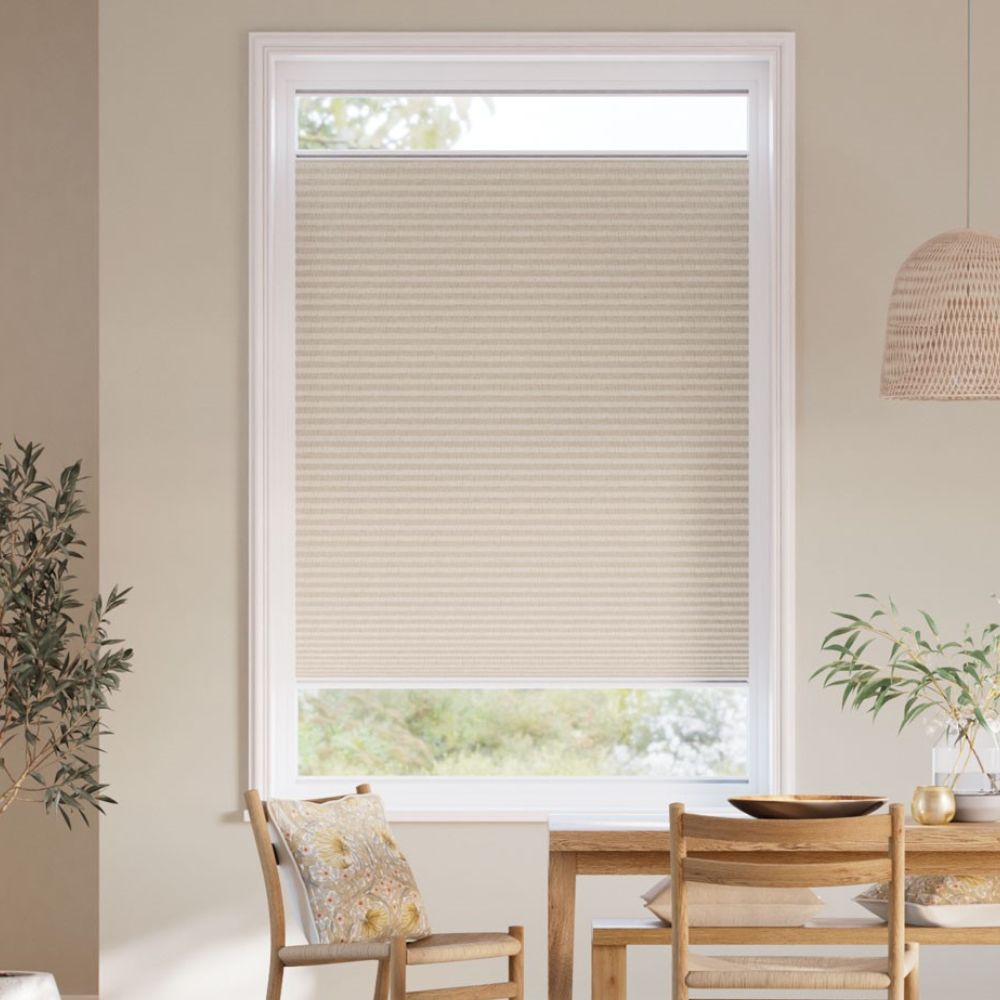
Ideal for almost any window, these thermal blinds feature an innovative adhesive strip so they can be installed without uPVC window beading or window recesses.
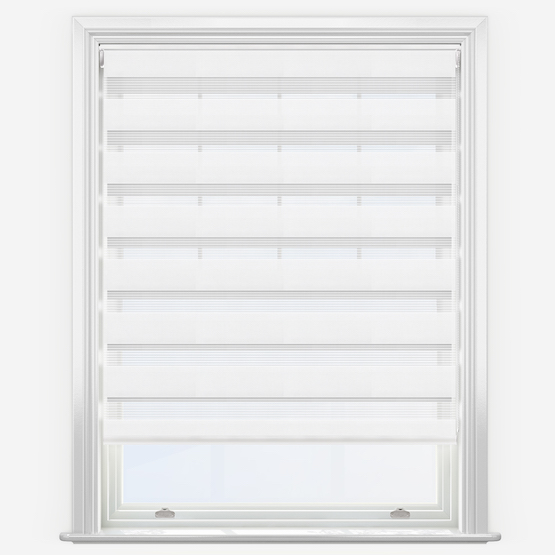
These versatile day-to-night blinds feature alternating fabric strips that let you effortlessly switch between light-filtering stripes and full privacy.

These full length roller blinds have a textured slub finish, offering light control, privacy, and a versatile design that complements both classic and contemporary interiors.
3. Upgrade your glazing to keep the heat out
If your conservatory feels more like a greenhouse on even moderately sunny days, outdated glazing could be the cause. Older conservatories, especially those with single-glazed or untreated glass, trap heat far more effectively than they let it escape. Upgrading to modern, energy-efficient glazing can make a huge difference, helping to keep your space cool in summer and cosy in winter.
One of the best options is solar control glass, which reflects excess heat while still allowing plenty of natural light to flood into your home. If a full glazing upgrade isn’t in your conservatory conversion budget, UV-coated window film is a great alternative, as it works to reduce glare and heat absorption without blocking your view. And if you’re planning a new conservatory, double or even triple glazing is well worth considering, helping to maintain a comfortable temperature all year round.
4. Choose Conservatory Flooring Wisely
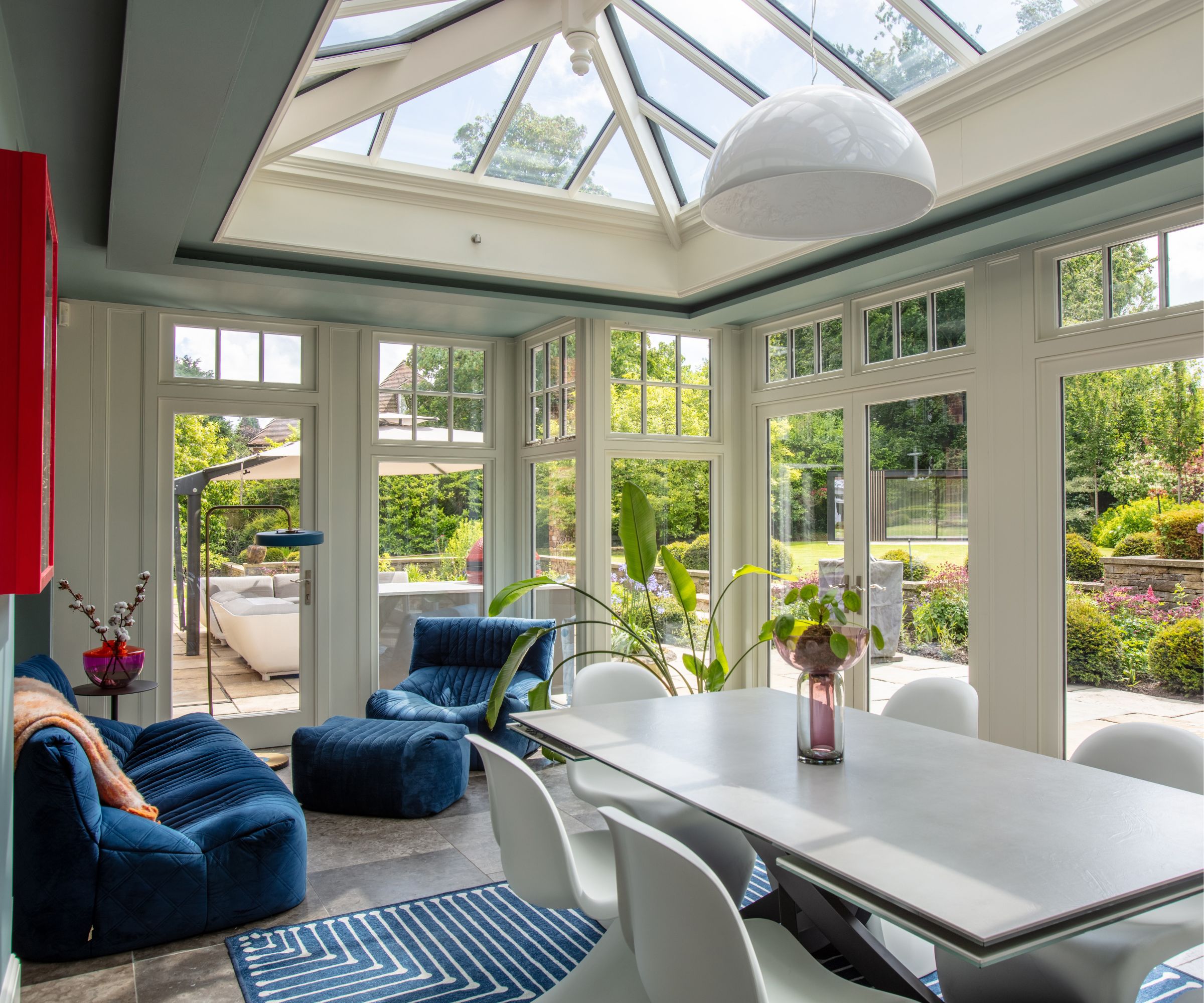
While ventilation, glazing and blinds are all fairly obvious ways to cool down a conservatory, flooring plays a surprisingly big role in keeping these rooms comfortable. Certain flooring materials absorb and trap heat, causing a space to feel hot and stuffy, while others help to regulate temperature naturally.
"Conservatory flooring needs very careful consideration as it’s expensive to replace if you get it wrong," says Mervyn Montgomery, joint-founder and managing director of Hampton Conservatories. "Conservatories are a sun trap, and although modern conservatory designs use new technologies and building techniques to maintain a cool ambient temperature inside, the choice of flooring can make a big difference. Opting for a naturally cooling material, like porcelain tiles, can reduce the risk of the floors heating to an unmanageable level."
Natural stone, such as limestone or slate tiles, is another great option, as these types of floors stay cool underfoot, even on the hottest days.

Mervyn founded Hampton Conservatories as a specialist manufacturer of bespoke joinery for the restoration and heritage sectors. Since then, he has personally led the company’s expansion across the UK, Ireland, and beyond.
5. Use Fans or Air Coolers to Circulate Air
Sometimes, even with the best ventilation and shading in place, a conservatory can still feel warm and stuffy. That’s where the best fans can make all the difference. A tower or pedestal fan will help move air around, preventing warm pockets from settling, while a ceiling fan (if your conservatory has the height for one) can draw hot air up and out of the space.
If your conservatory still holds onto the heat in the evenings, positioning a fan near an open window can help draw in cooler air from outside, giving the space a much-needed break from the day’s warmth.
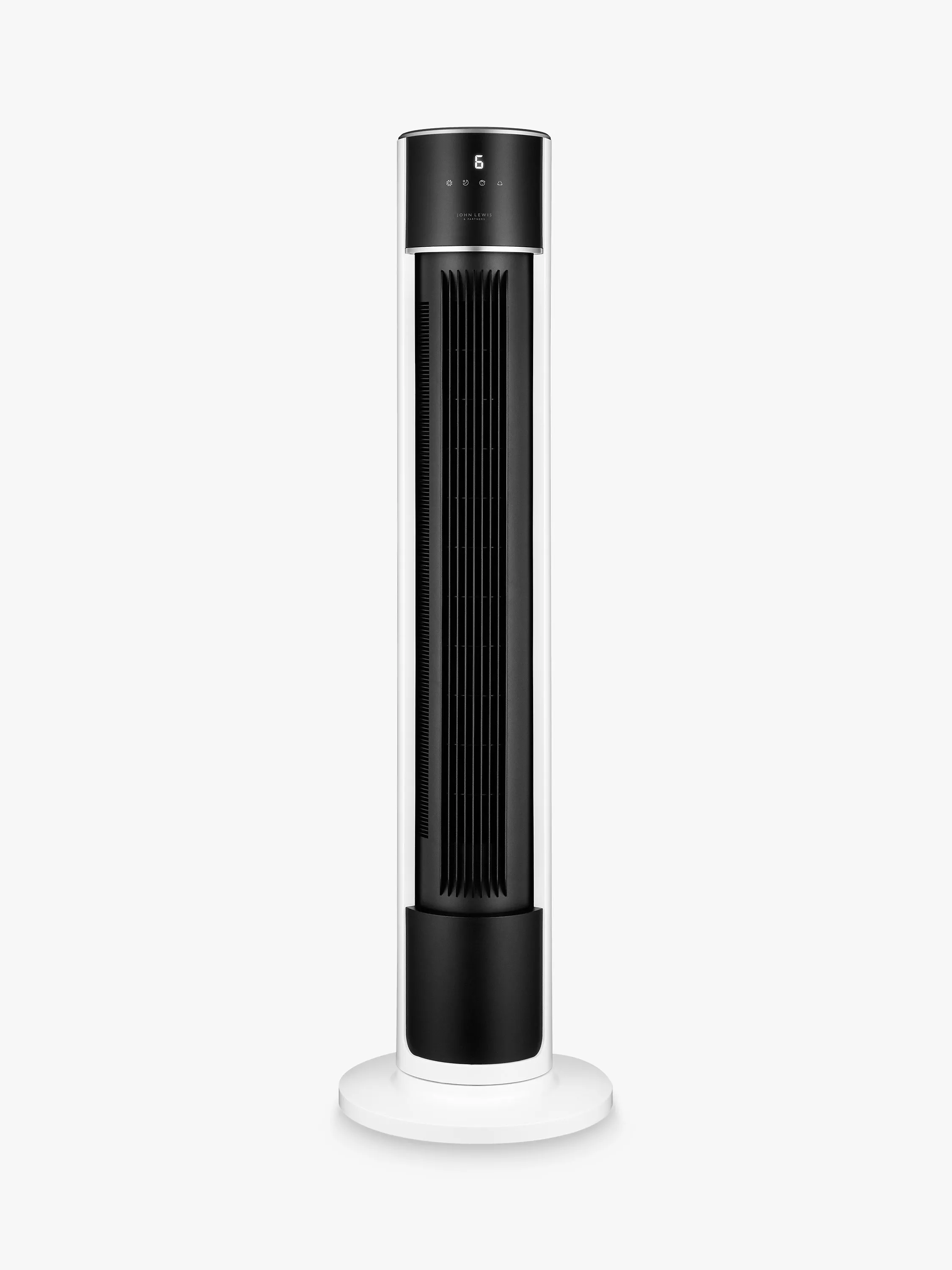
Standing at 107cm high this fan gives a good length of coverage no matter where it's pointed, plus it oscillates if you want to keep cool over a larger conservatory.
6. Style Your Conservatory Interiors for a Cooler Feel
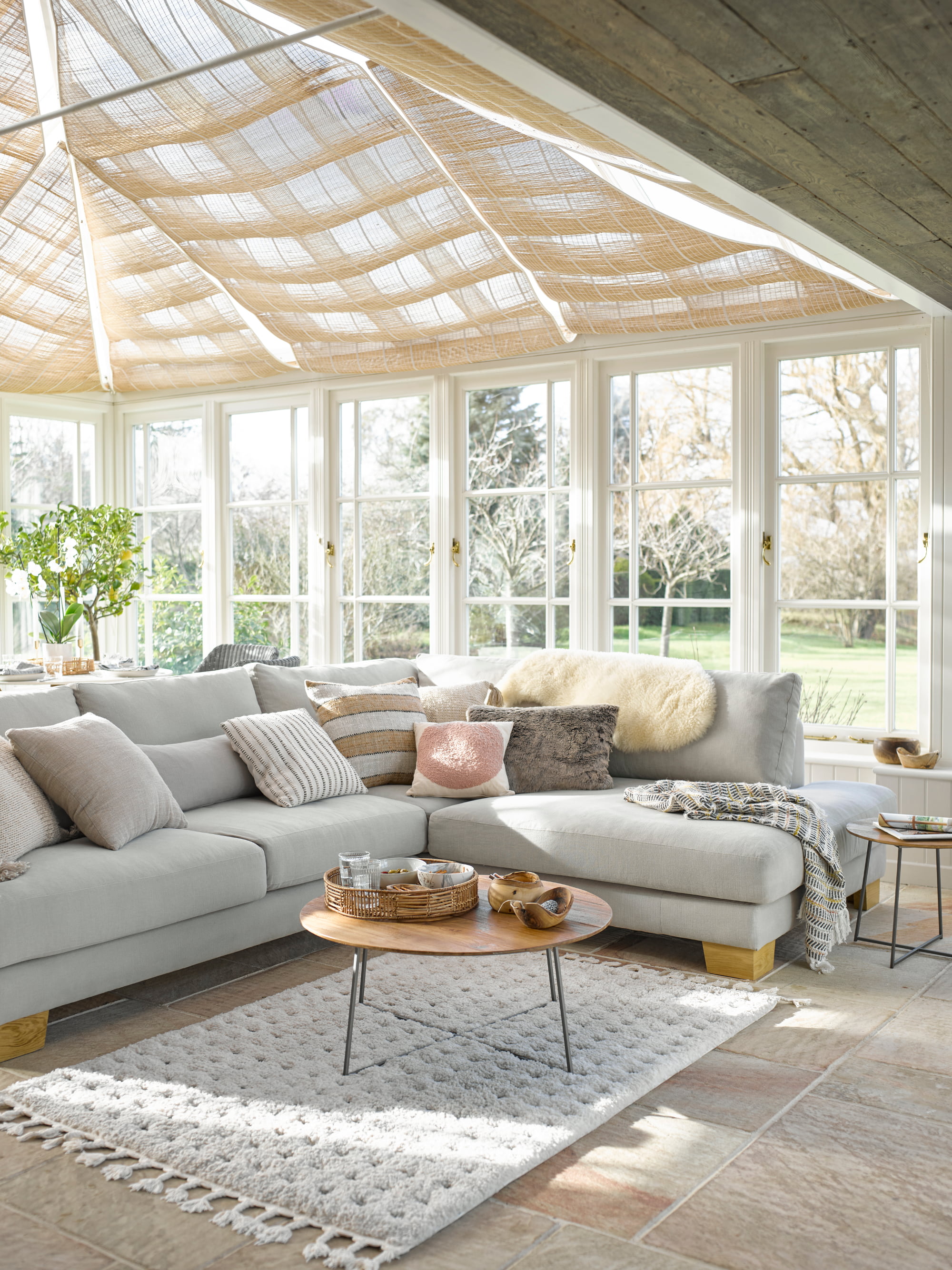
Your conservatory interiors can have a bigger impact on temperature than you might expect. Heavy, dark fabrics absorb heat, making the space feel warmer and stuffier, while light, breathable materials like cotton and linen help create a fresh, airy feel.
When considering furniture, rattan and wicker are great options, as they allow air to circulate, keeping the space naturally cooler than solid wood or upholstered pieces. Even houseplants can lend a helping hand. Peace lilies, areca palms, and rubber plants not only look fantastic in conservatories and sunrooms, but also help regulate humidity, releasing moisture into the air to create a more comfortable atmosphere.
7. Upgrade or Replace Your Conservatory Roof
If you’ve tried all of the above techniques and your conservatory still overheats in summer, the problem may be the roof itself. Older polycarbonate and single-glazed roofs trap heat during the day but lose it quickly when the temperature drops. Swapping to a tiled, solid, or hybrid roof can provide better conservatory roof insulation, helping to maintain a more consistent temperature inside.
“Even with modern technologies and methods to reduce excessive sunlight and inconvenient glare, you may still want to opt for a solid conservatory roof design," says Mervyn Montgomery from Hampton Conservatories. "These designs allow for additional shading during the summer months and a cosier feel during the winter."
If a full conservatory roof replacement isn’t an option, insulated roof panels can be retrofitted to reduce temperature fluctuations without the need for any major renovation work.
If you also struggle with a chilly conservatory during the colder months, it's worth noting that thermal blinds and high quality glazing can also help heat a conservatory in winter.
Get the Homebuilding & Renovating Newsletter
Bring your dream home to life with expert advice, how to guides and design inspiration. Sign up for our newsletter and get two free tickets to a Homebuilding & Renovating Show near you.

Gabriella is an interiors journalist and has a wealth of experience creating interiors and renovation content. She was Homebuilding & Renovating's former Assistant Editor as well as the former Head of Solved at sister brand Homes & Gardens, where she wrote and edited content addressing key renovation, DIY and interior questions.
She’s spent the past decade crafting copy for interiors publications, award-winning architects, and leading UK homeware brands. She also served as the Content Manager for the ethical homeware brand Nkuku.
Gabriella is a DIY enthusiast and a lover of all things interior design. She has a particular passion for historic buildings and listed properties, and she is currently in the process of renovating a Grade II-listed Victorian coach house in the West Country.
